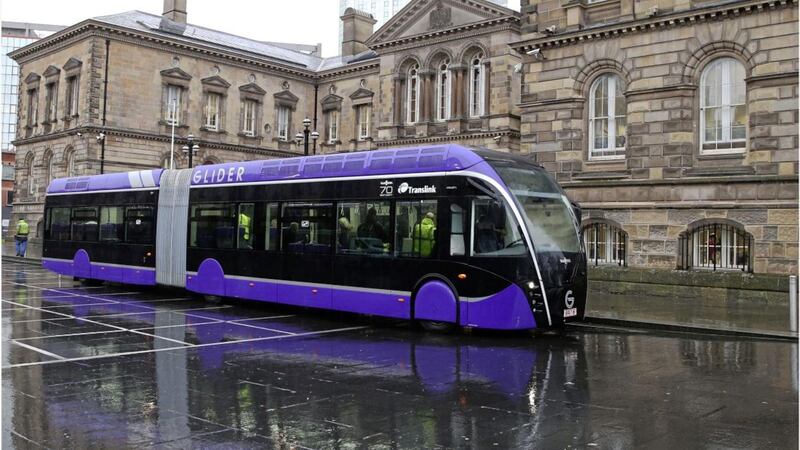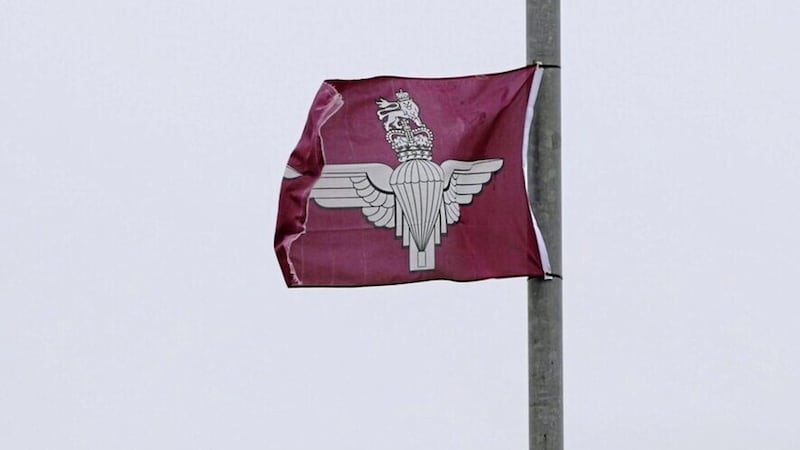The sabotage of Belfast’s Glider rapid transit system is becoming like the plot of Who Framed Roger Rabbit?, in which a host of cartoon characters conspired to dismantle the Los Angeles tram network.
It has emerged that former Sinn Féin transport minister Chris Hazzard met west Belfast MP Paul Maskey and taxi company owners on February 1 last year but at the final minute ordered civil servants not to attend. Consequently, no record of the meeting was taken.
Fifteen days later, Hazzard ordered a 12-week trial in the Glider lanes for all Class A taxis - that is, nearly all taxis - despite this undermining Glider’s basic premise and despite last February being a pre-election purdah period, when ministers are not meant to make controversial decisions.
Further taxi industry lobbying has now led to a full one-year trial for class A taxis, to start before Glider services begin in September. Glider vehicles may have lost their kerb-guided steering somewhere in the design process but officials at the Department for Infrastructure are still trundling along as directed.
Hazzard’s mysterious meeting recalls an equally opaque and far more significant encounter in 2008, when Conor Murphy - Hazzard’s Sinn Féin predecessor as transport minister - received representation from west Belfast’s black taxi industry.
Later that year, Murphy ruled out the tram option for what was then known as the Belfast Rapid Transit project.
If Glider was initially hobbled to placate west Belfast’s black taxi drivers, this is no longer the case. Black taxis are classed as taxi-buses and are already entitled to use all bus lanes, so letting Class A taxis into the lanes as well strips the black taxis of their advantage. An iconic republican constituency appears to have been stabbed in the back.
Sinn Féin could say with some justification that a tram was not on the cards. An official projection of cost and usage for bus and light rail options showed the economic case for the latter was hopeless.
However, such projections tend to be written with a pre-ordained conclusion in mind and when he chose the bus option, Murphy said it would be constructed to facilitate later upgrade to a tram - a standard approach in many cities around the world.
Yet there has been no mention or sign of this promise since funding was secured for rapid transit in 2011. Has the potential for a future tram been abandoned? If so, should this not have been announced?
Given the objections to Glider in west Belfast, it is ironic that it began life as a proposed tram in east Belfast.
In 2002, Peter Robinson - Murphy’s DUP predecessor as transport minister - earmarked £100m for a pilot rapid transit project along the disused railway trackbed between Dundonald and Holywood Arches.
The DUP’s interest in spending a fortune on narrow strips of land in east Belfast can only be surmised.
Feasibility studies were launched, with Robinson saying he had an open mind on bus and tram options. But then devolution collapsed and by the time Stormont returned the trackbed had been paved over as part of the Comber Greenway, making its use uneconomic and politically unpopular.
So the E-Way was shifted to the Newtownards Road and matched with a W-Way down the Falls Road, in accordance with the shiny new era of DUP-Sinn Féin government.
Glider is thus a classic Stormont policy - a sort of Social Investment Fund on wheels - in which one side has to get something because the other side is getting it, even if the neither particularly want it.
Lest this criticism fall entirely on west Belfast it should be noted that complaining in the east has been just as vociferous, although much less professionally organised, in accordance with sectarian stereotype.
The gurning of east Belfast motorists over traffic disruption has been worthy of Derek the Linfield fan from Dry Your Eyes.
Since Peter Robinson proposed the E-Way, extending rapid transit to west, north and south Belfast has been the long-term goal. This was mentioned in 2002 and appeared in the 2004 Belfast Metropolitan Area plan, while the scheme now under development is examining northern and southern routes.
Perhaps there would have been fewer political obstacles and less public hostility if the north-south axis had been built first. South Belfast’s student and young professional population would appear to make it an ideal testing ground. But politics determined we would do it the hard way - and could make Glider pointless before the first vehicle has run.
newton@irishnews.com









